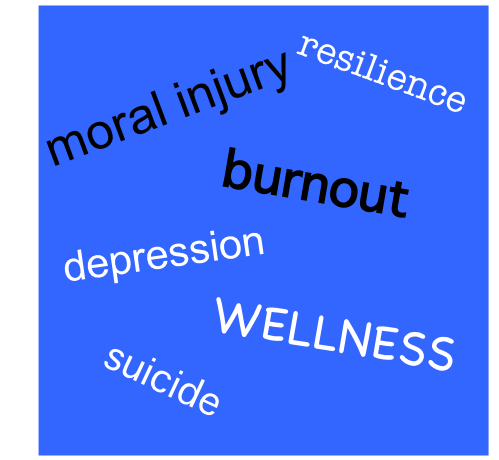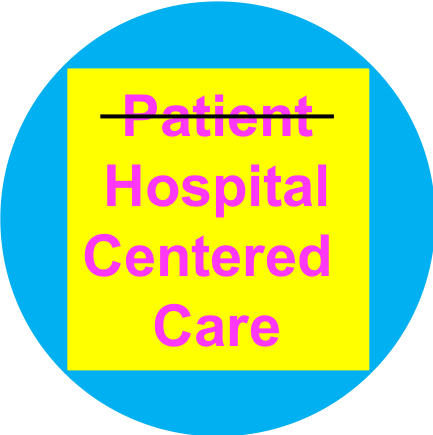The Microbiota Vault
 In January, I moderated a symposium that was based (virtually) in Peru to discuss preserving both the culture and the microbes of its indigenous people. Similar events, organized by the Global Microbiome Network, are planned in other regions around the world where indigenous populations still exist. Why is this important?
In January, I moderated a symposium that was based (virtually) in Peru to discuss preserving both the culture and the microbes of its indigenous people. Similar events, organized by the Global Microbiome Network, are planned in other regions around the world where indigenous populations still exist. Why is this important?
I’ve written before (here and here) about the importance of a healthy microbiota – those trillions of microbes that live in and on our bodies, especially in the gut. The collection of genes inside these microbial cells in called the microbiome. There are more genes in the microbiome than there are genes in the human body. These microbial genes perform necessary functions in our bodies like helping to digest food and producing vitamins. If some of these microbes die off, the functions performed by their genes are also lost. The loss of microbial species in our guts appears to be playing a role in the rise in chronic diseases that we are seeing in industrialized society. More and more research studies confirm the role of the microbiome in health and disease.
Sex and gender matter in COVID-19
Some people get extremely sick after infection with the novel coronavirus and other individuals remain asymptomatic or have a very mild course. We have no proven therapies (although there is some research that suggests an antiviral drug called remdesivir may help) and no short-term hopes for a vaccine. Clinical trials are in progress and public health strategies are being implemented. But, in order to combat COVID-19, the disease caused by the novel coronavirus, we need to look at the pandemic and the possible interventions through a sex and gender-based lens. Here’s why.
Read moreCOVID-19 in a nutshell
As a former hospital-based infectious diseases physician, I have been reading everything I can about the coronavirus pandemic. Because this is a new coronavirus not previously seen in humans, the World Health Organization gave the disease the name COVID-19, which stands for Coronavirus Disease 2019. While there is a flurry of high quality up-to-the-minute, information available, especially on Twitter, it is challenging to get the most important information in one place. Based on questions I am getting, here is my attempt to provide a quick overview and answer the key questions.
Read moreThe skinny on CBD
 It seems like everyone I know is taking CDB for something (insomnia, pain, anxiety, etc.) but what exactly is it and does it really work? And why is it so popular?
It seems like everyone I know is taking CDB for something (insomnia, pain, anxiety, etc.) but what exactly is it and does it really work? And why is it so popular?
CBD stands for cannabidiol and it is one of over 100 chemicals (called cannabinoids) that are extracted from the cannabis plant. Hemp and marijuana are different types of cannabis. Marijuana causes a “high” because it contains a lot of tetrahydrocannabinol (THC) but hemp has more CBD and very little THC. Most CBD you can buy comes from the hemp plant and is legal (in most US states) as long as it contains less that 0.3 percent THC.
Is the microbiome the key to health?
 Interest in the microbiome – those trillions of bugs (bacteria and other microorganisms) in your gut – is increasing and according to an article in the NY Times, drug companies are trying to get in on the action.
Interest in the microbiome – those trillions of bugs (bacteria and other microorganisms) in your gut – is increasing and according to an article in the NY Times, drug companies are trying to get in on the action.
As I’ve written before, these bugs may be important in the development of chronic disease leading to the possibility that you can “transplant” healthier bugs into someone with a disease. In fact, transferring the feces (poop) from one person to another has been shown to cure cases of Clostridioides difficile (C. diff) colitis (a life threatening infection of the gut caused by overuse of antibiotics). This is called fecal microbiota transplantation (FMT). Studies are ongoing to see if FMT can be used to treat inflammatory bowel disease (IBD), irritable bowel syndrome (IBS) and other chronic conditions. But there are a limited number of places doing FMT so people are doing their own transplants by harvesting the feces of a friend or family member and using a home blender (I’ll spare you any additional details but the DIY instructions are readily available online).
Physician burnout
 Physician burnout has been in the news for the past few years. Defined as a sense of physical and emotional collapse related to work stresses, symptoms include exhaustion, cynicism, feelings of incompetence and poor work performance. In a survey of 6,880 physicians in 2014, 54.4% reported at least 1 symptom of burnout (up from 45.5% in 2011) and the numbers are continuing to rise. A systematic review summarizing articles written about physician burnout suggests that burnout can also lead to an increase in medical errors. Among the suspected causes of burnout are the pressures of seeing more patients in less time, the challenges of documenting clinical visits in an electronic health record, increasing paperwork required by insurance companies, etc. In short, the demands of a fragmented, dysfunctional healthcare system are thought to be an important contributor to the suffering experienced by physicians.
Physician burnout has been in the news for the past few years. Defined as a sense of physical and emotional collapse related to work stresses, symptoms include exhaustion, cynicism, feelings of incompetence and poor work performance. In a survey of 6,880 physicians in 2014, 54.4% reported at least 1 symptom of burnout (up from 45.5% in 2011) and the numbers are continuing to rise. A systematic review summarizing articles written about physician burnout suggests that burnout can also lead to an increase in medical errors. Among the suspected causes of burnout are the pressures of seeing more patients in less time, the challenges of documenting clinical visits in an electronic health record, increasing paperwork required by insurance companies, etc. In short, the demands of a fragmented, dysfunctional healthcare system are thought to be an important contributor to the suffering experienced by physicians.
Patient-collected data
 In April 2018, I participated in the 2018 Quantified Self (QS) Symposium on Cardiovascular Diseases held in San Diego. I was reminded of that session several weeks ago while attending the 2nd Annual Meeting of the Society for Participatory Medicine. In both conferences I was struck by the power of patients’ observations and measurements to manage their own diseases.
In April 2018, I participated in the 2018 Quantified Self (QS) Symposium on Cardiovascular Diseases held in San Diego. I was reminded of that session several weeks ago while attending the 2nd Annual Meeting of the Society for Participatory Medicine. In both conferences I was struck by the power of patients’ observations and measurements to manage their own diseases.
I first learned about the Quantified Self movement a few years ago while reading about Larry Smarr, an astrophysicist and computer scientist who started tracking his own exercise and weight but ultimately began expanding his self-tracking to include blood tests when he was told he had “pre-diabetes”. He ultimately diagnosed his own Crohn’s disease long before he had any symptoms based on analyzing his own blood and stool tests (including twice weekly stool microbiome analysis). He has since published a how-to guide in a biotechnology journal and participated in planning his own bowel resection for Crohn’s disease in 2016.
Hospital centered care
 Healthcare decisions are increasingly driven by efficiency and economic factors, even at the end of life. This was brought home to me several months ago with my mother’s death after a short hospitalization for a lung infection.
Healthcare decisions are increasingly driven by efficiency and economic factors, even at the end of life. This was brought home to me several months ago with my mother’s death after a short hospitalization for a lung infection.
Because I was planning to be on vacation during the time of her hospitalization, I was able to be at her side pretty much full time, allowing me a front row seat to a series of decisions that were based on efficiency and hospital reputation rather than patient care.
Follow the money
 A few days after my success getting insurance coverage for a 3-month supply of my daughter’s specialty medication, I learned that my husband’s employer was switching to a new specialty pharmacy. This meant that a new organization was now handling all the logistics of getting the drug to may daughter – the paper work, the shipping, collecting of co-pays, etc.
A few days after my success getting insurance coverage for a 3-month supply of my daughter’s specialty medication, I learned that my husband’s employer was switching to a new specialty pharmacy. This meant that a new organization was now handling all the logistics of getting the drug to may daughter – the paper work, the shipping, collecting of co-pays, etc.
While this was very frustrating news, it was not surprising. Specialty drug spending has increased dramatically in recent years. While there is no standard definition of specialty drugs, these are the high-priced drugs (> $600/month) that are often given by injection and are used to treat serious inflammatory conditions (like rheumatoid arthritis or Crohn’s disease), infections (like HIV and hepatitis C) and many types of cancer. These drugs are often amazing – they save lives and improve symptoms in people who would have suffered greatly in the past. Sadly, companies are competing to make money from these high-priced drugs.
It is easy to blame drug companies for the high price of specialty drugs but they are not the only ones who make money on these drugs.
Our insurance mess
 A few months ago, I read the horrifying story in the New York Times written by a physician, Aaron Carroll entitled “Trapped in the System: A Sick Doctor’s Story”, about how difficult it was for him to get his prescription filled. At the time I joked with my husband that the story didn’t sound that bad to me. My daughter has been taking “specialty drugs” (expensive drugs that are used to treat complicated medical problems like cancer, rheumatoid arthritis and multiple sclerosis) for several years and we have had many frustrating experiences, especially trying to figure out the medical bills. Her recent switch to a new specialty drug has caused the biggest problems yet.
A few months ago, I read the horrifying story in the New York Times written by a physician, Aaron Carroll entitled “Trapped in the System: A Sick Doctor’s Story”, about how difficult it was for him to get his prescription filled. At the time I joked with my husband that the story didn’t sound that bad to me. My daughter has been taking “specialty drugs” (expensive drugs that are used to treat complicated medical problems like cancer, rheumatoid arthritis and multiple sclerosis) for several years and we have had many frustrating experiences, especially trying to figure out the medical bills. Her recent switch to a new specialty drug has caused the biggest problems yet.
Most insurance plans use other companies, called pharmacy benefit managers or PBMs, to manage prescription drugs. And PBMs use companies called “specialty pharmacies” (often owned by them) to manage specialty drugs, which are a key factor in driving up healthcare costs.